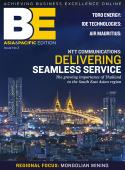Where the rubber meets the information highway┬áIn its quest to improve traffic flow, the Missouri Department of Transportation has embraced the use of technology as part of its comprehensive outreach effort, Keith Regan learns. ItÔÇÖs been nearly 275 years since the state of Missouri built its first sanctioned roadway, Three Notch Road, which went into use in 1735. Today, the Missouri Department of Transportation (MoDOT) is responsible for more than 32,000 miles of highways and 10,000 bridges across the state and embraces modern communications and tracking technologies to ensure the tens of thousands of cars that use those roads every day are moving as smoothly as possible. On major projects and daily operations alike, communication and coordination are a significant focus for the agency, according to Deanna Venker, MoDOT area engineer for the City of St. Louis, where many of MoDOTÔÇÖs investments in technologyÔÇösuch as dynamic message boards and dynamic speed limit signs, which work with monitoring cameras and radar systems to address traffic situations as they happenÔÇöhave been made. The area is also the focus of one of MoDOTÔÇÖs larger roadway improvement projects, the $535 million upgrade of Interstate 64, parts of which date to the 1930s. The highway needed realignment to adjust to modern speeds as well as bridge and overpass upgrades. The project will also address a dangerous and bizarre interstate-to-interstate connection that previously involved traffic coming to a stop at the end of a ramp in front of a shopping center and will now involve ramp-to-ramp connections. After decades of planning and several false starts, final design work began in 2000, and work got under way in 2007. What makes the project unique is that entire sections of highway are being closed during portions of the work, a move that greatly reduces the total construction but creates the need for extensive planning and coordination of alternate routes, says Venker. ÔÇ£The project is one of a kind and is being seen as a prototype for how to close an interstate in a busy metropolitan area and the communication thatÔÇÖs required to make that happen.ÔÇØBefore the decision was made to close the road, the alternative of using lane closures and doing staged construction was considered, but it would have taken as long as 10 years. Because the road was only three lanes in places, ÔÇ£even when we closed a single lane to do shoulder work and despite all the notifications, we would still get traffic backed up for miles.ÔÇØMoDOT then looked at the full-closure option and began to work out ways to move traffic onto other interstates and surface roads. ÔÇ£We looked at where people were really likely to go, even though we told them the routes we wanted them to take,ÔÇØ Venker says. ÔÇ£Some people are set on taking the shortest distance, and we knew we would have to make improvements to allow for that.ÔÇØThat meant extensive coordination with the city and county of St. Louis and dozens of smaller suburbs. Surface roads were improved, with stop signs removed and replaced with traffic signals, and extensive modeling was done to demonstrate that the alternative routes would work. The results so far have been positive, with some residents reporting shorter commuting times than on the old highway. All told, nine miles of highway will be closed completely in two phases. Work on the first section was completed in December 2008, and the second section is now being worked on and is due to be completed in December 2009. One reason the closures have gone relatively smoothly is that MoDOT is constantly communicating with everyone affected by the work, especially MissouriÔÇÖs drivers. Dynamic message boards provide real-time travel time updates and advice on alternative routes, utilizing a network of 120 cameras run from MoDOTÔÇÖs command center. In addition, permanent radar guns constantly monitor speeds, and on some stretches of roadway dynamic speed limit signs can be used to adjust the travel speeds behind a slowdown or accident, reducing the stop-and-go effect of traffic tie-ups.The state also utilizes a 511 commuter information system that enables drivers to get recorded information on road closings and preferred alternate routes. MoDOT also operates a fleet of vehicles that help clear breakdowns quickly and get help as needed to accident sites. That means coordination with some 250 municipalities within the St. Louis Metro region alone.MoDOTÔÇÖs work on projects such as I-64 is also the focus of a standing feature in the areaÔÇÖs major newspaper, the St. Louis Post-Dispatch, and blog postings on the newspaperÔÇÖs Web site. ÔÇ£ItÔÇÖs in the newspaper just about every day,ÔÇØ Venker notes. Representatives of MoDOT also appear on a weekly call-in radio show to answer questions from callers and e-mail queries. MoDOT also worked with major digital map providers to create maps showing roadway closures and other temporary changes when travelers use sites such as Mapquest to plan a route. While awaiting word on which projects might be funded by the Obama administrationÔÇÖs fiscal stimulus package, the MoDOT is also working on a long-range plan to repair or replace the most seriously deficient bridges in the state. The Safe and Sound program hopes to use a consistent and repeatable design for bridge spans that can be reused with only minor modifications. Some 802 bridges have been targeted for improvement, and the team is to be selected in May of this year to carry out this project. However, credit market turmoil made sourcing a single bond for all the work difficult. As an alternative, a design-build contract was awarded for 554 of the bridge replacements, with the remaining 248 to be carried out using a modified design-bid-build approach. ÔÇ£The agency had to be flexible in order to address the realities of the marketplace,ÔÇØ Venker says.The agency knows it cannot build its way out of traffic congestion and has embraced technology as much as pavement and steel. ÔÇ£WeÔÇÖve seen across the US that roadway systems get to the point where they canÔÇÖt get any bigger. You can only add so many lanes to a road and have it be functional. The goal has to be managing the roadways that you have effectively and efficiently,ÔÇØ says Venker. ÔÇ£For us, a big part of that means giving people access to information and allowing them to make educated decisions about which routes to take.ÔÇØ ÔÇô Editorial research by Jason Moore┬á









